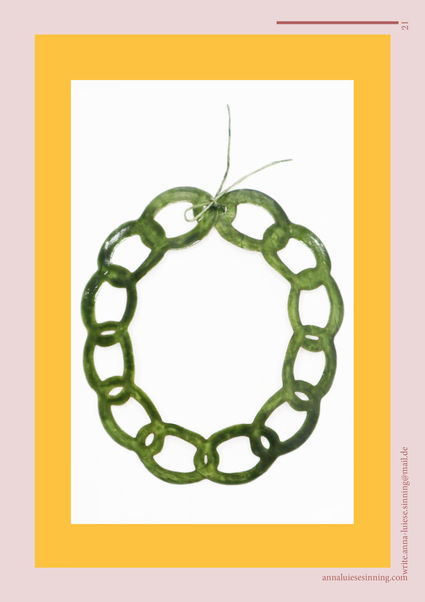
[credits:] Paulina Hildesheim www.paulinahildesheim.com
RETHINK;REGROWING;RECONNECT
re;
2019/Masterprojekt
RETHINK;REGROWING;RECONNECT
re;
2019/Masterprojekt
RETHINK;REGROWING;RECONNECT
re;
2019/Masterprojekt
RETHINK;REGROWING;RECONNECT
re;
2019/Masterprojekt
RETHINK;REGROWING;RECONNECT
re;
2019/Masterprojekt
RETHINK;REGROWING;RECONNECT
re;
2019/Masterprojekt
how to work with scoby?;
SUSTAINABLE DESIGN GUIDE -
2020/Elsa-Neumann-Stipendium
„Most commodities live longer than their creators and consumers alike-for even a simple plastic bag will outlive us all many times over. [...] Therefore, as all objects that enter into this world are commodities, we must realize that this is not our world, but theirs.“ *
BACKGROUND
vision & reality?
/ A nylon fabric takes up to 40 years. A rubber boot sole up to 80 years & polyester fabric up to 200 years. None of them are biodegradable. During this time they break down into tiny particles of their materiality. **
The increasing number of lifetime-graphics with mostly hypothetical values, symbolize a growing awareness among the consumer nations, that commodities made from materials of the technosphere (e.g. plastics) are already a serious threat to our world, which is at the limit of reproduction and capacity.
Recycling as an all-round solution should counteract this problem.
But only a minor percentage of plastics is regenerated by recycling companies (less than 10% worldwide ***). Furthermore, there is no guarantee that consumed goods will ultimately be added to the recycling cycle by the consumer.
We face a man-made problem where the man-made solution fails.
[* S.25,Neomaterialism,2013; Joshua Simon]

CONCEPT
how to work with scoby!
/ In this project, a more radical different design-approach is explored in order to counteract the problem of durable & environmentally-harmful commodities. The basis for this is the equally radical scenario that the consumer dumps the commodity directly (willfully or unintentionally) into the biosphere.
In response to this scenario, a series of integrally designed objects is being developed, which combine several sustainable design strategies, all together with the goal of 100% biodegradability in top of priority.
The start of each object-concept is the use of a natural & locally produced material called 'Scoby', which use brings a lot of benefits in all strategic points.
Integrated into this project a multi-part guide will be created, with the goal to encourage people to work with sustainable design processes. The content of the guide will include the explanation of each strategy & its exemplary implementation visualized throw the manufacturing of the object series.

<
GUIDE
[instagram:]
a.lu.si





























